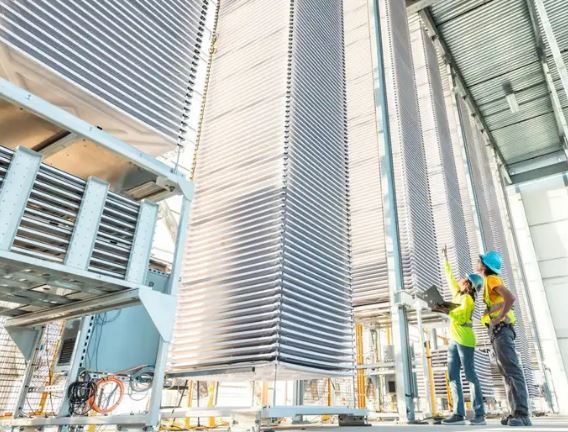Limiting global warming to 1.5°C above pre-industrial levels as outlined in the Paris Agreement requires unprecedented efforts to reduce and remove carbon dioxide (CO2) emissions. Alongside aggressive emissions reductions, most climate scenarios depend on carbon dioxide removal (CDR) technologies to help achieve climate targets. CDR refers to processes that capture CO2 directly from the atmosphere or enhance natural CO2 sinks. While CDR holds promise for mitigating climate change impacts, concerns exist that overreliance on unproven and expensive CDR may delay vital near-term emissions cuts. Understanding the realistic potential and limitations of CDR is key for policymakers navigating climate solutions.
Why CDR technologies matter for climate targets
According to the Intergovernmental Panel on Climate Change (IPCC), pathways limiting warming to 1.5°C require global net CO2 emissions to decline by about 45% from 2010 levels by 2030. This necessitates rapid and deep economy-wide transformations in energy infrastructure, industry, transportation, cities, and more over the next decade. However, with current national pledges still falling short of emission reductions needed by 2030, most modeled 1.5°C pathways rely on removing 100-1,000 billion metric tons of CO2 this century. This is why the IPCC and leading researchers argue CDR will likely be required at scale.
CDR refers to processes that actively remove CO2 from the atmosphere and durably store it in geological, terrestrial or ocean reservoirs, or in products. Major approaches include afforestation/reforestation, soil carbon sequestration, bioenergy with carbon capture and storage (BECCS), direct air capture and storage (DACS), enhanced weathering, and ocean alkalinity enhancement.
According to the IPCC, CDR already deployed at scale includes afforestation/reforestation, soil carbon sequestration, BECCS, and to a lesser extent DACS. Others like enhanced weathering or ocean alkalinity enhancement remain at earlier stages of development and testing.
Also read: How big a problem are methane and other non-CO2 greenhouse gases?
CDR can provide additional emissions reductions not possible through mitigation alone. It may serve as a complementary risk management measure by offering an option to counterbalance residual emissions that prove too difficult or expensive to fully eliminate by mid-century. It could also potentially remove historic emissions from the atmosphere to accelerate cooling. This is why most modeled scenarios consistent with 1.5°C require large-scale CDR deployment in addition to all feasible emissions reductions.
Concerns over reliance on CDR and delays to mitigation
However, while most experts agree CDR will be needed to achieve climate targets, many highlight risks around overreliance on CDR in climate planning and policy. Concerns mainly center on three areas:
- CDR deployment at scale may not materialize: Most existing CDR methods remain unproven at scale or face major barriers to rapid upscaling. For example, BECCS has yet to be demonstrated at scale despite over a decade of research. DACS, while seeing new projects, still requires major cost reductions. And approaches like ocean alkalinity enhancement carry ecological risks requiring further study. If CDR fails to deploy at scale envisioned in models, emissions reductions must be much steeper.
- CDR may delay near-term mitigation: Emphasizing future CDR potential may foster justification to delay vital emissions cuts in the near-term. However, rapid mitigation this decade is essential to limiting warming to 1.5°C. Betting on future CDR without urgently cutting emissions across all sectors makes 1.5°C exponentially more difficult.
- Costs and investment may limit realistic potential: All CDR requires substantial investment and land use changes. Approaches like DACS, BECCS and afforestation compete for resources with other climate solutions. Constraints around financing, land availability, greenhouse gas removal incentives, and political will could restrict how much CDR can realistically deliver regardless of technical potential.
Also read: The Power of Techtonica Water Wheel
CDR optimism requires caution
In light of these concerns, many argue reliance on CDR requires careful consideration of assumptions and uncertainties. Overoptimism around CDR may pose a moral hazard if it encourages lack of near-term climate action or masks true climate risks. At the same time, underinvestment risks failure to develop CDR at needed scales.
Navigating these tensions, experts emphasize policies should incentivize maximum feasible mitigation efforts while also spurring CDR innovation through research, development and demonstration (RD&D). This balanced approach clarifies CDR is not an alternative to urgent near-term emissions cuts, but rather a critical complement in climate risk management.
Also read: AI can figure out sewing patterns from a single photo of clothing
Ongoing innovation can continue improving CDR methods to minimize land, cost and sustainability constraints. However even with rapid technical progress, most modeled 1.5°C scenarios likely require some form of CDR given how extremely difficult full decarbonization of certain sectors like aviation may prove. This is why IPCC projections show meaningful CDR deployment beginning by 2030, alongside deep mitigation.
CDR policies key for managing climate risks
Overall the question is not whether CDR helps or hinders climate targets, but rather whether current climate policies adequately incentivize emissions cuts today while also spurring CDR innovation for tomorrow. Well-designed policy measures around carbon pricing, regulation, RD&D investment and greenhouse gas removal incentives can provide that balanced incentive framework optimized for climate risk management.
Also read: GPT66X AI Technology – Your New Smart Friend
Getting policies right is vital so CDR plays its needed roleaugmenting aggressive mitigation without replacing or reducing it. Policymakers must take care to avoid moral hazards that allow CDR optimism to undermine real emissions cuts critical this decade. If deployed responsibly through balanced climate policies, experts agree CDR can serve as one crucial tool helping achieve climate targets amidst a highly constrained carbon budget. The urgent priority remains completely decarbonizing economies by mid-century through energy transformations. In tandem, policies accelerating CDR readiness can manage residual risk and offer potential to correct emissions overshoot. This twin-track approach gives the best odds of staying within 1.5°C and avoiding the worst climate change impacts. But near-term action cannot wait for CDR alone to solve the climate crisis.
